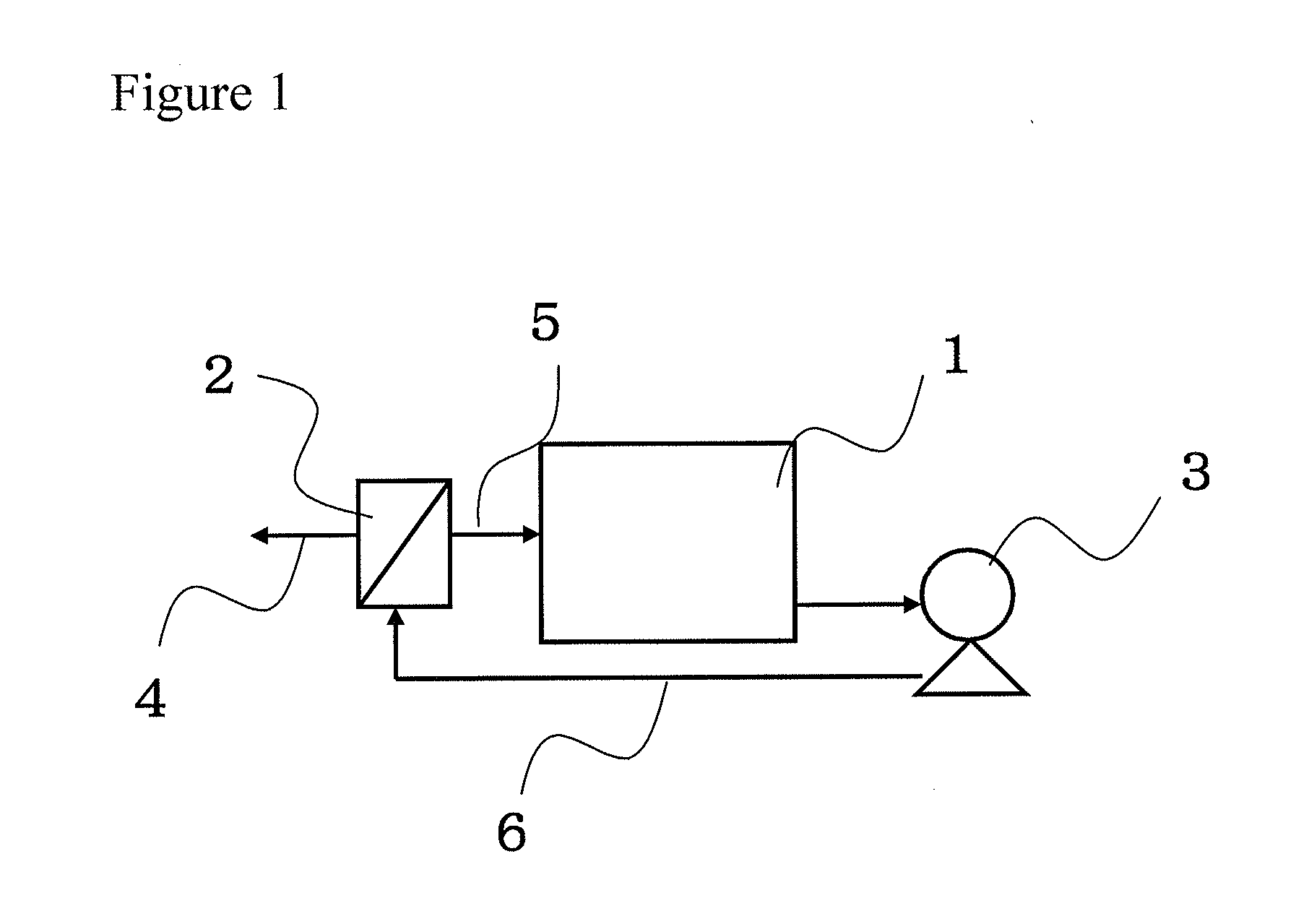Process for production of aqueous refined sugar solution
- Summary
- Abstract
- Description
- Claims
- Application Information
AI Technical Summary
Benefits of technology
Problems solved by technology
Method used
Image
Examples
reference example 1
Method for Determining Average Particle Diameter by Particle Size Distribution Measurement
[0133]Particle size distribution measurement was carried out using ELS-8000 supplied by Otsuka Electronics Co., Ltd., and the arithmetic average particle diameter was calculated from particle size values and scattering intensity values obtained from the resulting scattering intensity distribution histogram.
[0134]For Examples and Comparative examples given here, preparation and measurement of samples used for particle size distribution measurement and their injection into cells were carried out as described below. First, 100 g of an aqueous sugar solution obtained in each step was left to stand for 6 hours. After the still-standing time, a pipet was put into the aqueous sugar solution to a depth of about 1 cm from the surface to take a sample, which was poured slowly to a particle diameter measuring cell attached to the ELS-8000 equipment. Here, if a coagulation-treated aqueous sugar solution is...
reference example 2
Analysis Method for Monosaccharide Concentration
[0135]The concentration of monosaccharides (glucose and xylose) contained in an aqueous sugar solution produced above was determined from comparison with authentic samples under the HPLC conditions listed below.
[0136]Column: Luna NH2 (manufactured by Phenomenex)
[0137]Mobile phase: ratio of ultrapure water to acetonitrile=25:75 (flow rate 0.6 ml / min)
[0138]Reaction liquid: none
[0139]Detection method: RI (differential refractive index)
[0140]Temperature: 30° C.
reference example 3
Analysis Method for Concentration of Fermentation Impeding Substances
[0141]Furan based fermentation impeding substances (HMF, furfural) and phenolic fermentation impeding substances (vanillin, acetovanillin) contained in an aqueous sugar solution were determined from comparison with authentic samples under the HPLC conditions listed below.
[0142]Column: Synergi HidroRP 4.6 mm×250 mm (manufactured by Phenomenex)
[0143]Mobile phase: acetonitrile—0.1% H3PO4 (flow rate 1.0 ml / min)
[0144]Detection method: UV (283 nm)
[0145]Temperature: 40° C.
[0146]Organic acid based fermentation impeding substances (acetic acid, formic acid) contained in an aqueous sugar solution were quantitatively determined from comparison with authentic samples under the HPLC conditions listed below.
[0147]Column: Shim-Pack SPR—H and Shim-Pack CR101H (supplied by Shimadzu Corporation) connected in series
[0148]Mobile phase: 5 mM p-toluene sulfonic acid (flow rate 0.8 ml / min) Reaction liquid: 5 mM p-toluene sulfonic acid, 2...
PUM
| Property | Measurement | Unit |
|---|---|---|
| Length | aaaaa | aaaaa |
| Particle diameter | aaaaa | aaaaa |
| Fraction | aaaaa | aaaaa |
Abstract
Description
Claims
Application Information
 Login to View More
Login to View More - R&D
- Intellectual Property
- Life Sciences
- Materials
- Tech Scout
- Unparalleled Data Quality
- Higher Quality Content
- 60% Fewer Hallucinations
Browse by: Latest US Patents, China's latest patents, Technical Efficacy Thesaurus, Application Domain, Technology Topic, Popular Technical Reports.
© 2025 PatSnap. All rights reserved.Legal|Privacy policy|Modern Slavery Act Transparency Statement|Sitemap|About US| Contact US: help@patsnap.com



